Diseases and pests of dill
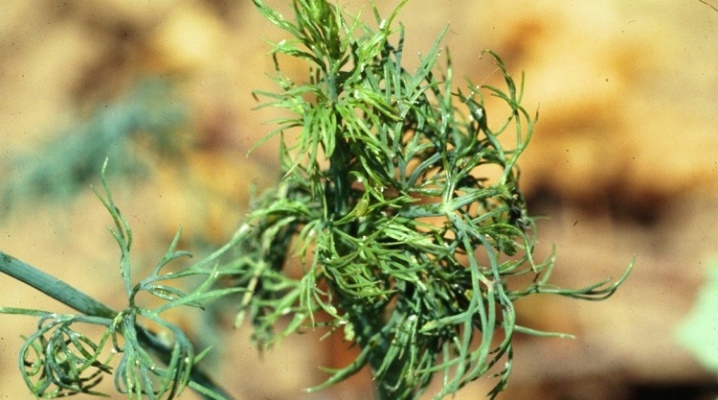
Dill is considered an extremely unpretentious plant. It is enough to plant the seeds once, and it will grow. Dill has enough moisture from natural precipitation. Also, the plant does not need feeding. However, dill can also fall prey to plant parasites and fungi. Therefore, it is better to immediately find out what problems you may encounter when growing and planting this crop. Timely measures will help save the crop from the invasion of harmful insects or fungal infections.

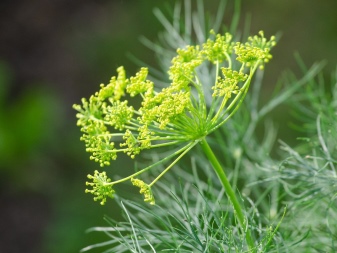
Diseases and their treatment
The plant naturally has good immunity, which was passed on to different varieties of dill during selection. However, there are factors in which the plant gets sick and dries out. Dill can become a victim of a fungus, from which the plant has no protection.
Peronosporosis
If greenish spots appear on the plant, it may be downy mildew... The affected areas are oily to the touch and can range in color from dark green at the beginning of the lesion to brown at the end. From the inside, the leaf is covered with a gray bloom, the spots become more and more until they hit the whole plant. The leaves gradually lose their color, and then crumble into separate pieces. A characteristic sign of peronosporosis is yellowness, the greens dry out and lose their characteristic taste and smell.
The disease affects the plant in a very short time, in a few days... Fungal spores are carried from plant to plant by aphids and whiteflies. The disease can develop with temperature changes at different times of the day or with frequent rains.
Another factor in the development of the fungus is watering with ice water.

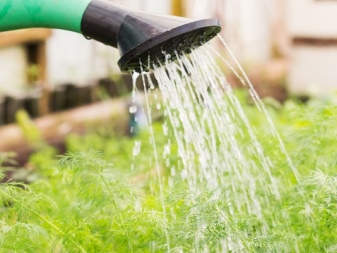
Powdery mildew
This disease affects plants most often, including dill. The fungus develops in conditions of high humidity (more than 70%), as well as if in summer the temperature drops below 20 degrees... Spores are carried by insects that climb the leaves and stems in search of food. The leaves of the affected plant are covered with a whitish brown powder. The plaque gradually becomes harder and turns brown. The plant curls up, dries up and dies. Such dill can be eaten, but it will not have a pronounced taste and smell.
If you find powdery mildew before it has time to infect the plant, you can correct the situation.... To do this, dill is treated with a tincture of arrows of young onions or garlic. You can use a solution of mustard powder. If the fungus appears on the leaves or individual branches, they are removed. After removing the affected areas, the plant is sprayed with laundry soap foam. Tar soap is also suitable for the solution. The fungus quickly dies in an acidic environment, so you can use kefir solution... You can prepare it by mixing kefir and water in a 1: 10 ratio. A little iodine should be poured into the solution.
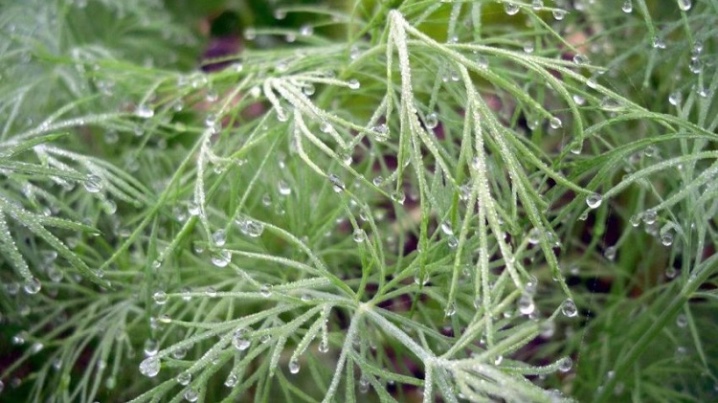
Fomoz
Carrots are more often affected by this disease than dill, although the plants are members of the same family. Phomosis appears in hot climates with high humidity... Another factor provoking the development of the disease is the lack of boron in the ground.
On the leaves of the affected plants, brownish or whitish-gray spots with a dark border can be traced. The back of the leaves becomes bluish, and the lower leaves may turn completely pink. Affected plants dry quickly and then die. If you pluck a dill bush from the ground, you can see grayish sores on the rhizome. The root under such blotches literally crumbles when touched.
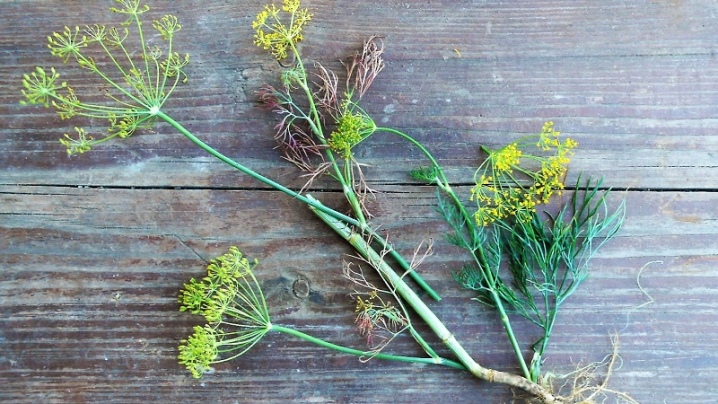
Verticillary wilting
This disease most often affects root plants and bushes, but dill can also die. The incubation period of the disease is long - 2-3 years. At this time, the plant looks normal, but the disease develops in the soil. After a long time, the plant begins to deform, wither slowly. The factors of development are heat above 25 degrees, as well as low humidity. The fungus blocks the vessels through which moisture passes. Accordingly, useful liquids simply do not reach the plant rhizome. Obut begins to lack nutrients and vitamins. In this case, the fungus releases toxins that poison plant tissues. Infected plants are characterized by looseness and underdevelopment of the roots.
The lower leaves quickly dry out and fall off. Watering doesn't solve the problem in any way. In the future, the plant stops developing, the leaves become red. At the same time, whitish stains resembling a cobweb may appear on previously green surfaces, however, this is not a prerequisite for veticillosis.
This disease is often confused with the activity of a spider mite and acaricides are used in the treatment of plants, which ultimately do not help.
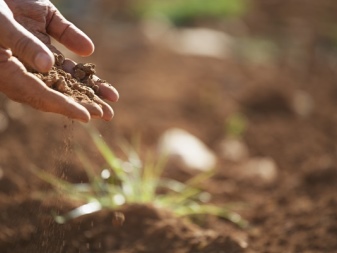
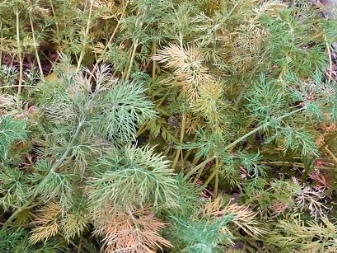
Cercosporosis
This is an extremely dangerous fungus that can develop on all plants, inhibiting the development of green bushes. Due to the fungus, photosynthesis is not carried out, as a result of which new leaves are not formed, and the plant "freezes" in development. The fungus is active during cool and high humidity, feels great at temperatures no higher than 20 degrees.
The disease is characterized by the appearance of small brown spots bordered by a reddish stripe. Infected surfaces feel velvety to the touch. The spots gradually grow around the perimeter and fill the entire sheet. The leaves soon begin to rot and fall off.
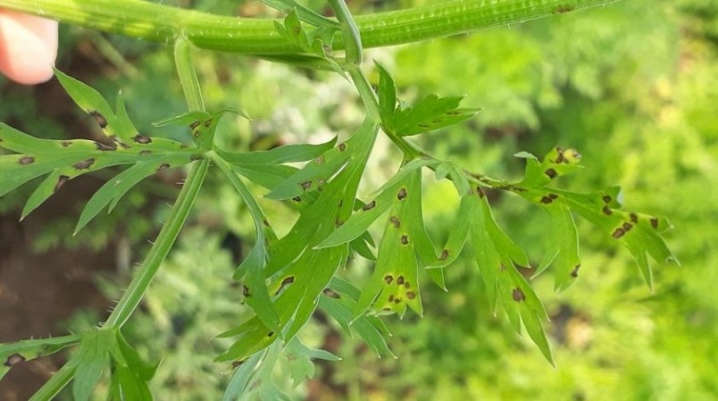
Blackleg
The disease most often affects young shoots, killing most of the seedlings. The disease can appear due to frequent watering. The stem begins to dry out and becomes thinner. The plant literally falls to the ground and dies.
If the first signs of the disease appear, watering should be reduced. You should not stop watering the plants; it is enough to moisten the ground so that it does not dry out. For watering, you can use a special solution - potassium crystals are diluted in water, after which it becomes pinkish. After watering, you need to loosen the soil at the roots so that water does not stagnate in the ground.
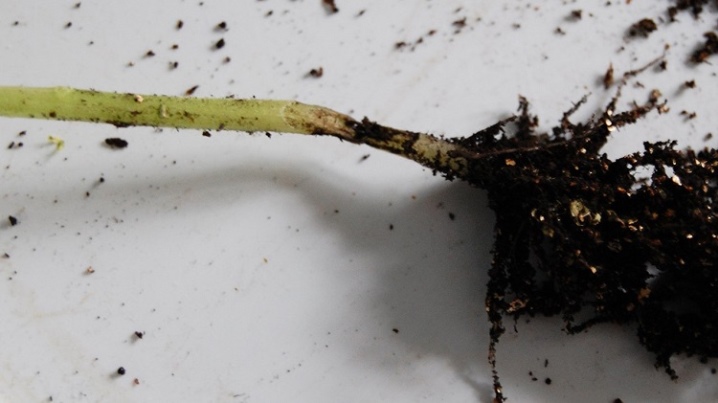
Fusarium wilting
An extremely dangerous disease that affects almost all plants. The fungus destroys plant tissues, poisoning them with toxic secretions. Infected fruits cannot be eaten. The fungus feels great in acidic soil, but does not tolerate clay substrate. The disease develops in heat, in humid air. That is why dill growing in greenhouses can become a victim of fungus. Spores are carried by insects that feed on plant sap - spider mites, aphids and whiteflies.
Affected leaves, inflorescences and twigs turn yellow and wither. On diseased tissues, watery stains are visible, which first appear at the roots, and then throughout the plant. If you cut off a diseased plant, then black dots will be visible on the cut - dead vessels. Pinkish-white formations may appear at the roots.
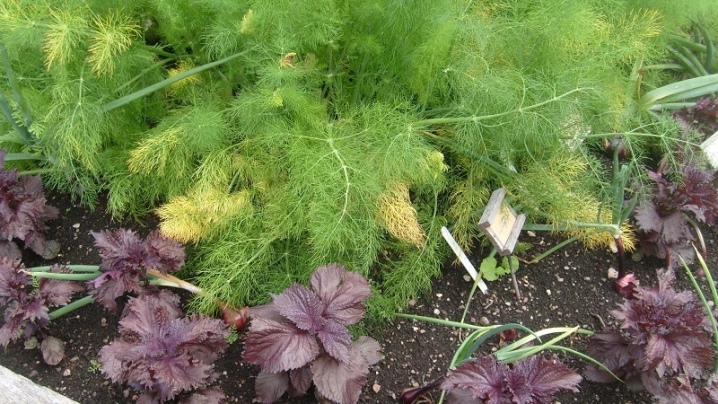
Pest Review and Control
Due to the abundance of essential oils, dill has a rather pungent aroma. This becomes the plant's natural defense against insects. But the strong smell does not protect the plant from all pests.
Dill moth
The butterfly is also called the "carrot" moth.... The insect is small in size and has dull brown wings. Red patches appear on the leading edge of the wings. Adult insects lay their eggs directly on the ground or on plants. Caterpillars emerging from eggs begin to actively eat the soft tissues of the plant. Caterpillars are also reddish-green in color.
Midges eat soft tissues - inflorescences and buds.They braid the dill umbrellas with a substance that resembles a cobweb. You can destroy the insect by ripping off the umbrella. Spraying and any additional measures are not as effective as eliminating the affected dill umbrella.
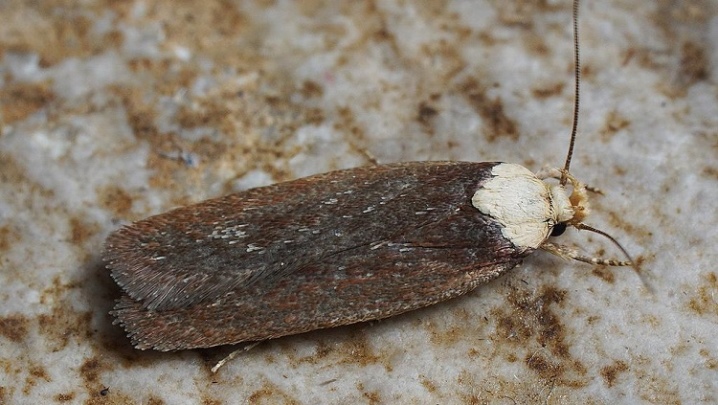
Carrot lily
These are small green insects up to 2 mm in diameter. The insect has small transparent wings with a greenish tint. In the fall, the lice lay eggs on the rhizome of plants. In the spring, larvae emerge from the eggs, which suck the sap from the plants. The larvae have a pale green color, on their bodies there are growths in the form of a fringe. It is very difficult to see the larvae - they merge with the plant and hide under the leaves. Young insects settle on foliage, feeding on plant sap. Soon the leaves begin to dry out, deform and fall off.
You can get rid of leaf beetles, if you spray the plants with a setting of citrus peels, mustard powder and water. You can cover the soil with wood ash, to which you need to add dry tobacco leaves and ground pepper. The pest does not tolerate the onion smell, so you can plant onions next to the dill beds.
Also, as a preventive measure, you can plant buckwheat bushes, which have the same effect on this type of pest.
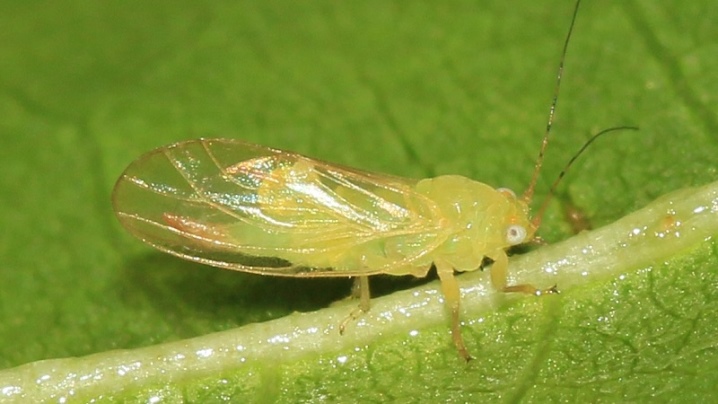
Carrot fly
It is a miniature insect with a length of about 5 mm. The larvae are very small and have a pale yellow color. The period of flies activity begins in early May and lasts for about a month. Usually, apple and mountain ash trees begin to bloom at this time.
The larvae, hatching from the eggs, go to the rhizome. In the ground, pests begin to stick to delicate roots. They creep into fabrics that take on a brick shade. Plants begin to grow more slowly, the stems acquire an irregular shape. The leaves turn purple and eventually dry out.
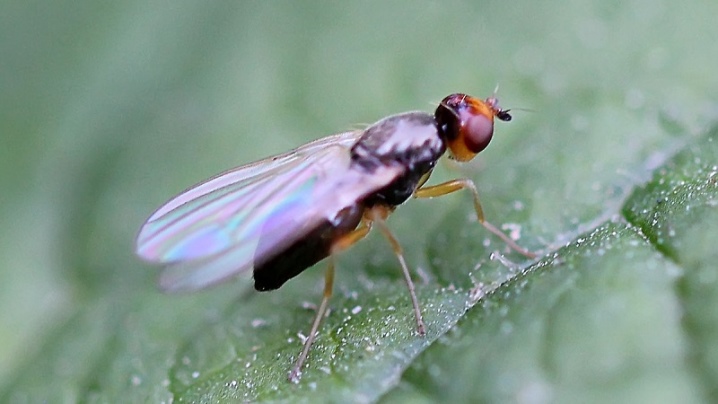
Striped bush bug
The pest is called both the ruled scutellum, and the Italian bug, and the striped graphimosa. The Italian insect was named because of the similarities with the flowers of the form of the military of the Vatican. There are black and red stripes on the carapace of the bush bug. The bug loves not only dill, but also carrots and parsley. The insect loves warmth, so it is simply impossible to see it in the north of Russia. On the plant, you can immediately see the shield bug. They live in huge groups on dill umbrellas, feeding on the sap of the plant. As a result, the seeds do not have time to ripen or are deformed, which negatively affects their germination.
The insect is slow and has poor disguise.... The bright colors seem to warn of the danger of the insect, although in fact it is not dangerous for people. Shield beetles can be collected by hand, dill umbrellas can be lowered into the water. Spraying with dichlorvos and anti-flea aerosols will also help.
As a rule, continuous cultivation of the beds is not necessary. An exception is the situation when a pest massively infects plants.
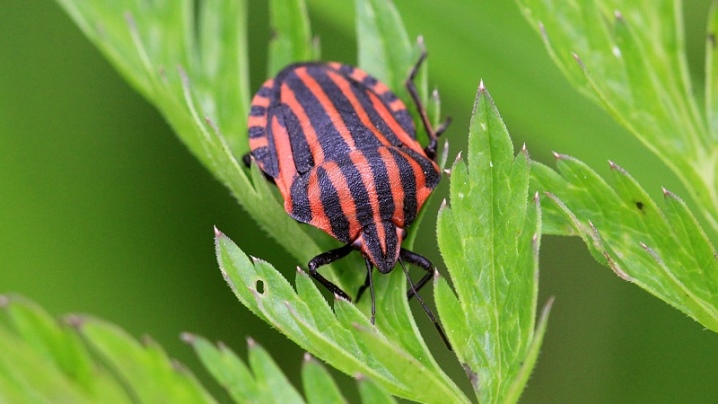
Prevention measures
It is best to immediately take preventive measures that will save the crop from the invasion of parasites or fungal diseases. You can avoid a lot of problems by following simple preventive measures to preserve fragrant greens:
- plant dill in new places every season;
- with the arrival of autumn, dig in the beds;
- do not forget to harvest and burn the tops left after harvesting;
- pull out umbrella plants, including hogweed, around the perimeter of the site;
- keep the soil moisture level under control, do not get carried away with frequent watering;
- make gaps between planted seedlings and seedlings;
- before planting, you need to disinfect the seeds by dipping them in a solution of potassium permanganate to avoid the appearance of slugs.

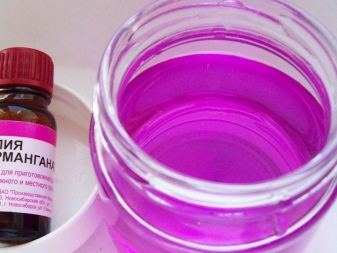
If all the plants are affected by diseases, you can treat them with a special composition. You can use chemical solutions, however, there are many popular and completely safe analogs:
- tincture of mandarin, orange or lemon peels (for 1 liter of pure water, about 100 grams of citrus peels are taken, the mixture is infused for three days);
- tincture of onion and garlic arrows (200 grams of raw material is taken per 1 liter of water);
- laundry soap dissolved in water (10 liters will require about 200 grams of soap);
- tobacco tincture (approximately 50 grams is required for 1 liter of water);
- ash diluted in water (50 grams of ash per 1 liter).
If after applying the formulations there was no result, you can try to spray the plants with another organic infusion.... Chemicals should be used last. To help gardeners, a huge number of special products are sold to protect against fungus and insects. - Bordeaux liquid, fungicides, copper oxychloride. Most often, properly carried out preventive measures help protect dill and cope with the problem very quickly. Prevention is especially relevant if the process of plant disease or insect infestation has just begun.
Even a plant as hardy and strong as dill can fall prey to pests or fungal infections. It will be enough for a gardener to make a minimum of efforts so that the plants in the garden will delight with strength and beauty, and then an excellent harvest.
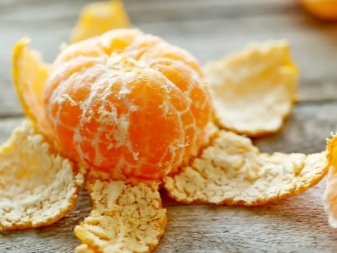














The comment was sent successfully.